30+ Mejores Prompts para Generador de Video a partir de Imágenes IA: La Guía Completa 2025
Última actualización: 2025-11-13 17:26:07
Pasaste horas perfeccionando tu imagen generada por IA. La iluminación es perfecta, la composición es impresionante, y estás listo para darle vida en video. Pero cuando presionas generar, el resultado es... decepcionante.
La cara del personaje se transforma en algo salido de una película de terror. El movimiento de cámara parece grabado durante un terremoto. O peor—nada se mueve y simplemente pierdes 10 créditos.
¿Te ha pasado?
Aquí está el asunto: la diferencia entre videos amateur hechos con IA y resultados profesionales no está en la herramienta que usas—es el prompt que escribes. He probado cientos de variantes en diferentes plataformas y puedo decirte que el 90% de los malos resultados vienen de prompts vagos o mal estructurados.
En esta guía encontrarás más de 30 prompts comprobados que realmente funcionan, además el método que uso para escribir prompts ganadores para cualquier imagen. Ya sea que uses Runway, Pika, Stable Video Diffusion o Kling AI, estos prompts te ayudarán a crear videos que no parecen hechos por alguien teniendo una convulsión.
¿Qué hace que un prompt de video IA a partir de imagen sea excelente?
Después de gastar más créditos de los que quisiera admitir, descubrí qué separa los prompts efectivos de los que sólo te hacen perder tiempo. Hay cinco elementos clave.
Los 5 Elementos Esenciales
- Descripción de movimiento "Agregar movimiento" no le dice nada a la IA. "Cabello moviéndose suavemente con el viento" le dice exactamente lo que quieres. Sé específico.
- Dirección de cámara Estas herramientas brillan cuando les das instrucciones claras de cámara: acercamiento, paneo a la izquierda, órbita alrededor, ascenso de grúa. Trátalo como si estuvieras dirigiendo a un cinematógrafo.
- Velocidad y ritmo "Lento" y "rápido" producen resultados totalmente diferentes. Usa palabras como "suave", "rápido", "gradual" o "explosivo" para controlar el ritmo.
- Cambios de iluminación Especifica si la luz debe permanecer constante o cambiar. Esto es más importante de lo que crees.
- Descriptores de calidad y estilo Términos como "cinematográfico", "estilo documental" o "calidad IMAX" ayudan a la IA a entender el nivel de producción que buscas.
La Fórmula que Funciona
Esto es lo que uso siempre:
[Movimiento de cámara] + [Movimiento del sujeto] + [Velocidad] + [Estilo/Calidad]Ejemplo: "Acercamiento lento, el personaje parpadea y sonríe suavemente, movimiento suave, iluminación cinematográfica, calidad 4K"¿Sencillo, verdad? Ahora veamos prompts específicos que puedes usar.30+ Prompts Listos para Generar Videos IA
Prompts Cinematográficos y Estilo Película
1. Retrato Épico Revelado
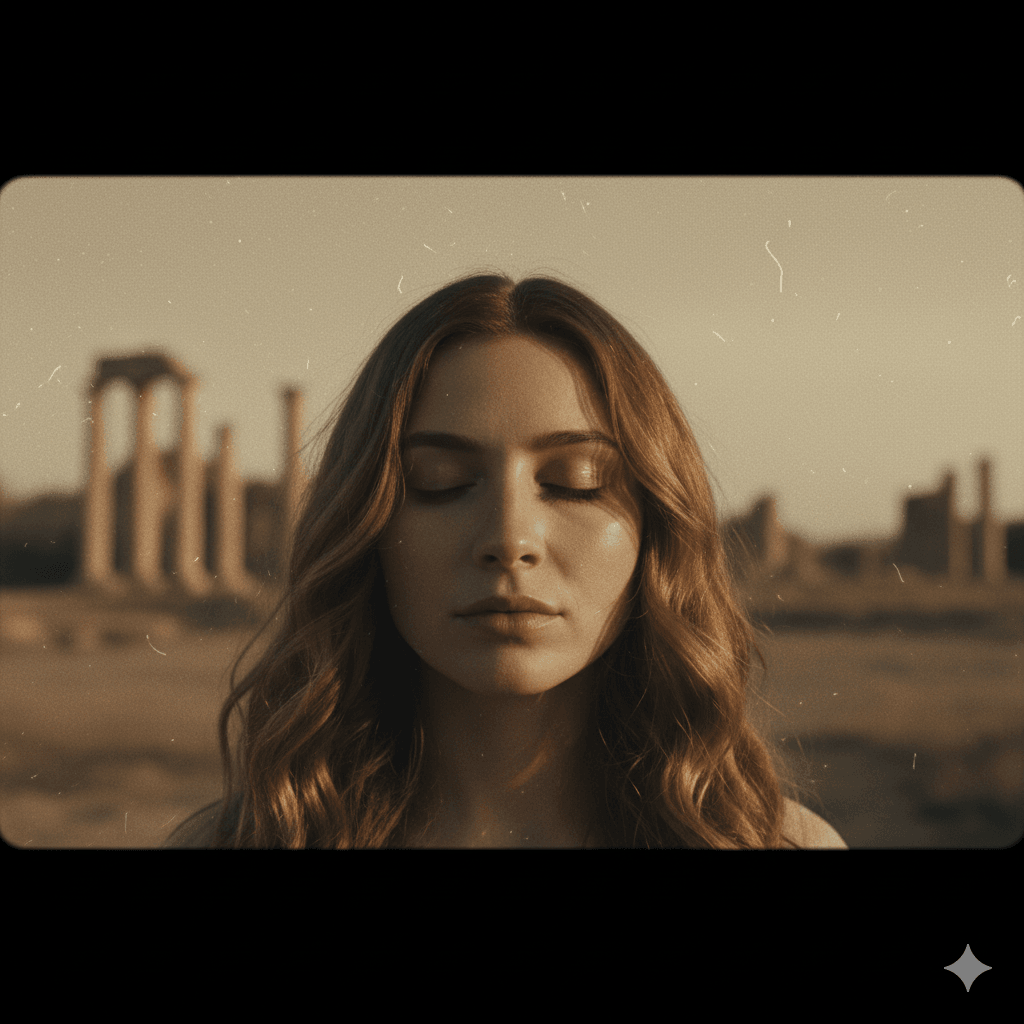
Zoom dolly lento hacia el rostro, los ojos del sujeto se abren lentamente, cabello moviéndose suavemente con el viento, iluminación cinematográfica dramática, grano de película, calidad de película 24fpsUsa esto para: Retrato de personajes, tomas de héroe, cualquier escena que necesite un toque dramático Funciona muy bien con: Runway Gen-3, Pika 1.52. Transición Escena Dramática
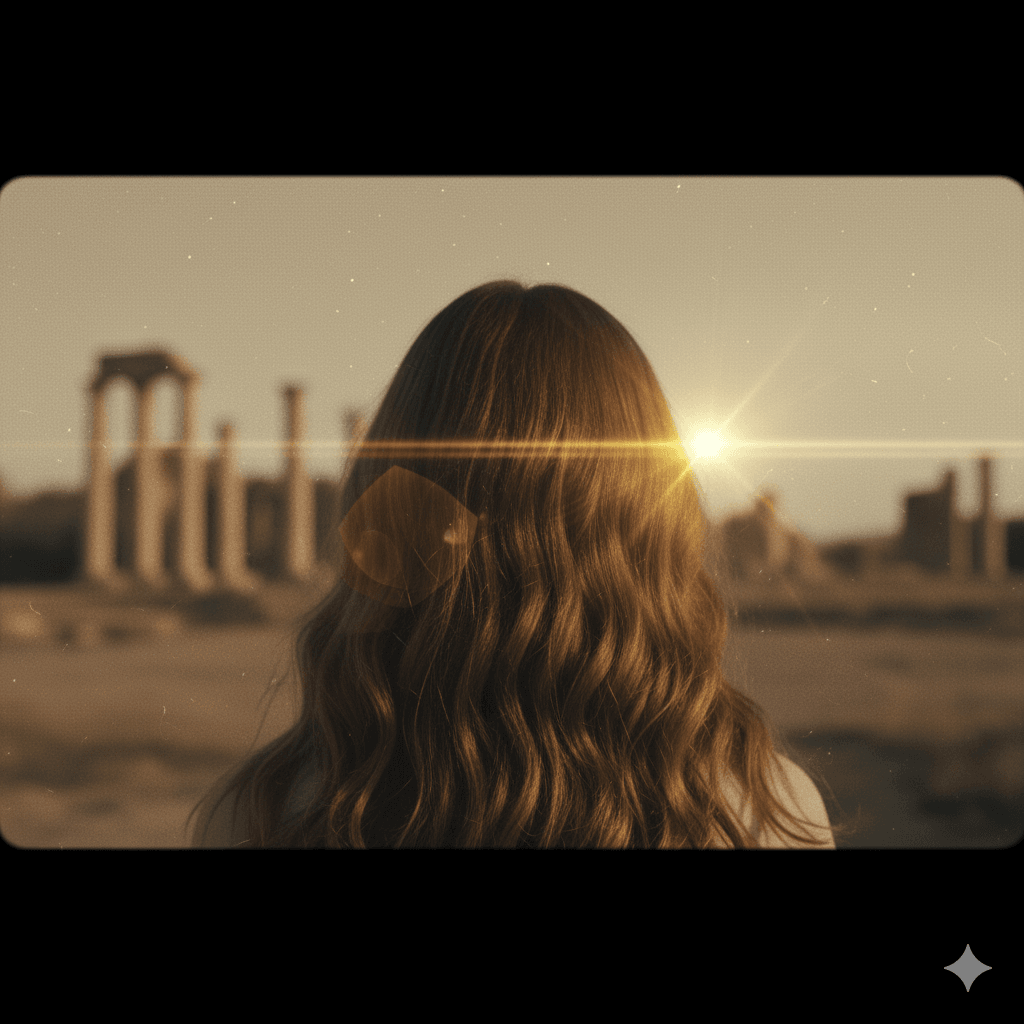
La cámara orbita 180 grados alrededor del sujeto, cámara lenta, destello de lente por luz de fondo, atmósfera sombría, cinematografía estilo Christopher NolanUsa esto para: Videos musicales, contenido artístico, momentos emocionales3. Entrada de Película de Acción
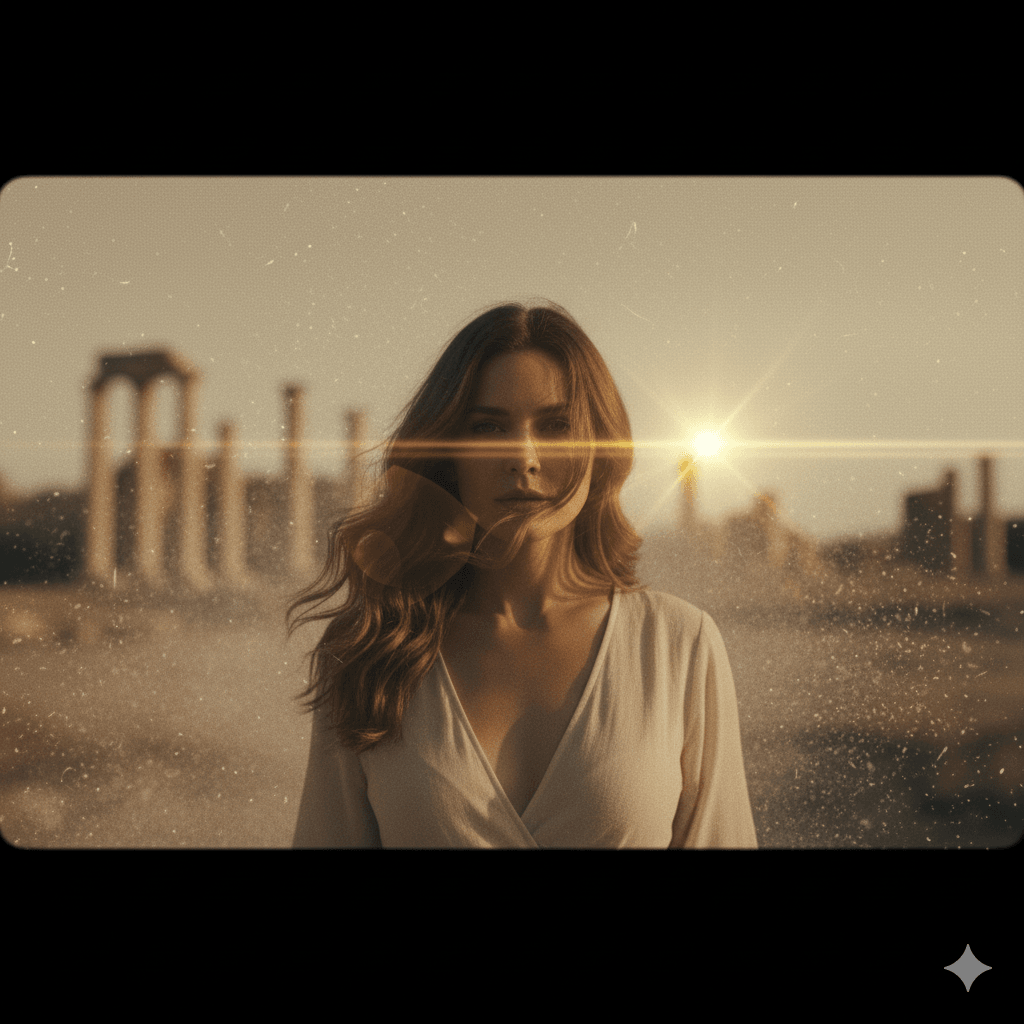
Acercamiento rápido hacia el sujeto, efecto de sacudida de cámara, el sujeto camina hacia adelante con confianza, partículas de polvo volando, iluminación de alto contraste, calidad de película taquilleraUsa esto para: Presentaciones de personajes, trailers, cualquier escena que necesite energía4. Acercamiento Misterioso
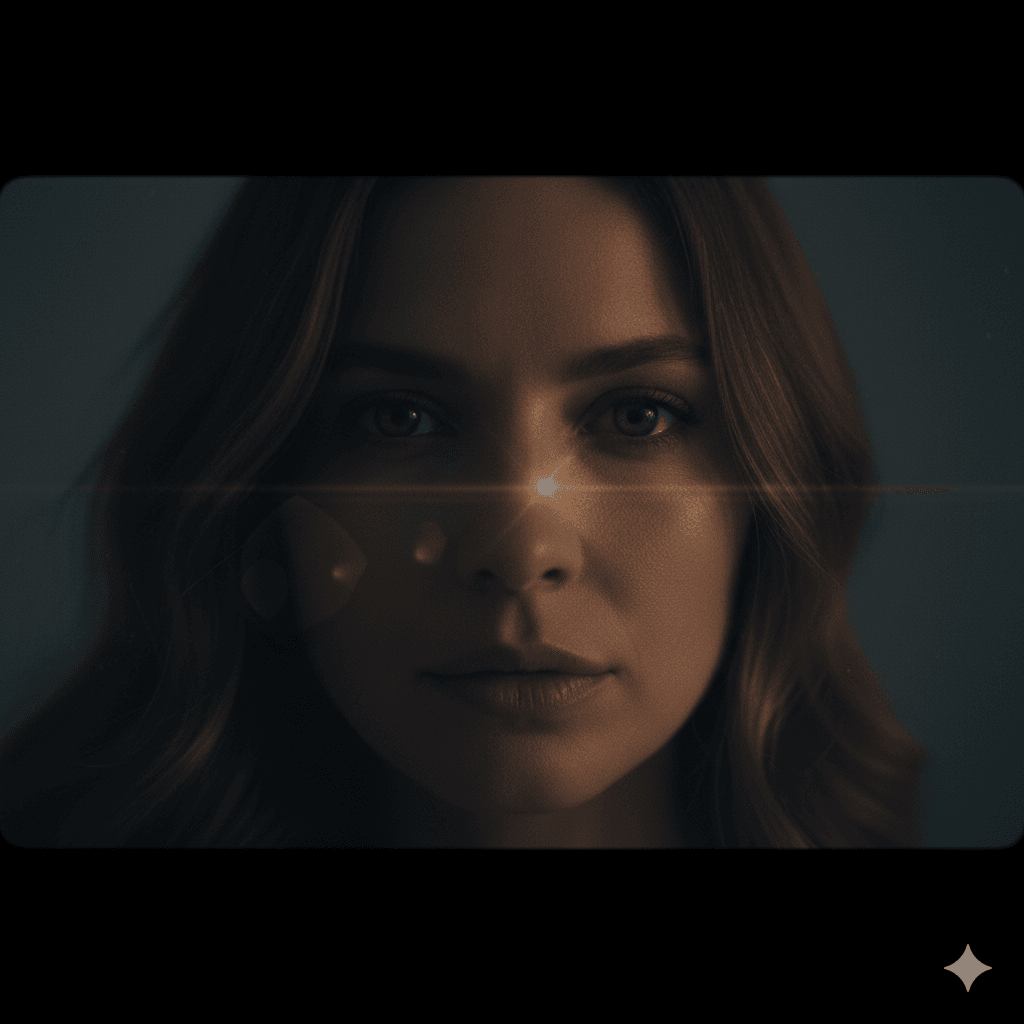
Acercamiento extremo a los ojos, zoom lento hacia atrás, sombras moviéndose por el rostro, atmósfera de suspenso, cinematografía estilo David FincherUsa esto para: Contenido de suspenso, revelaciones dramáticas, construir tensión5. Enfoque Suave de Ensueño
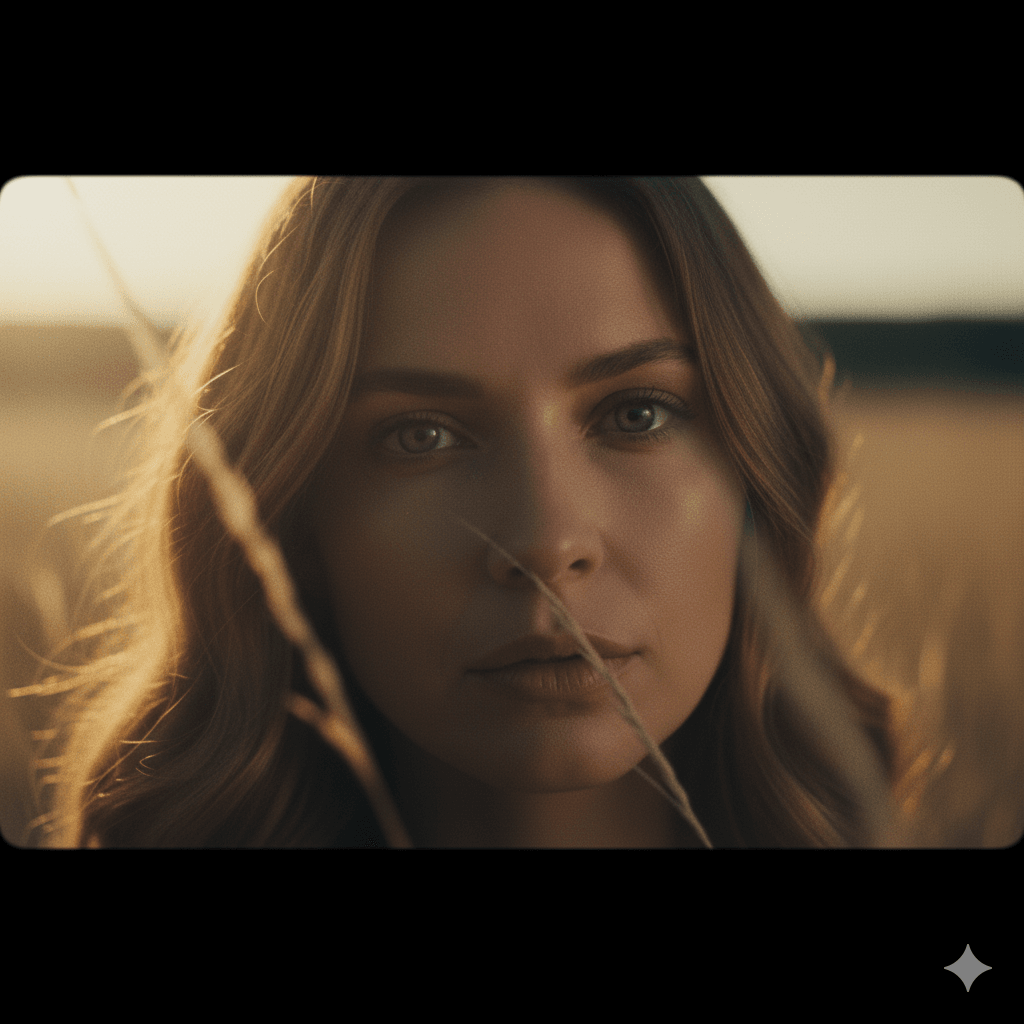
Enfoque suave desde primer plano al sujeto, fondo con bokeh, ligera inclinación de la cabeza, iluminación de hora dorada, estética Terrence MalickUsa esto para: Escenas románticas, tomas de belleza, contenido nostálgico6. Toma Héroe Elevándose
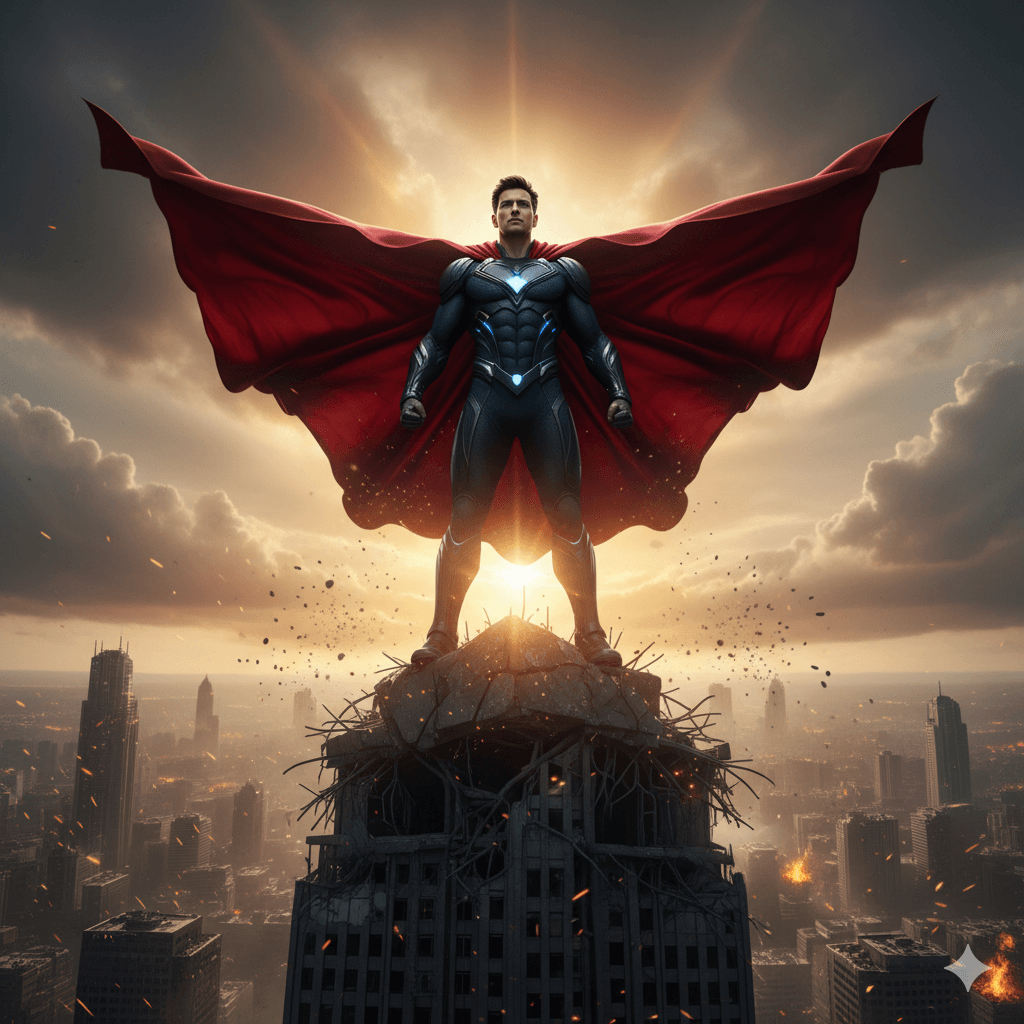
Cámara en ángulo bajo asciende, el sujeto se mantiene firme, capa o ropa ondeando dramáticamente, contraluz épico, estilo película MarvelUsa esto para: Contenido de superhéroes, videos motivacionales, momentos de poder7. Conversación Íntima

Profundidad de campo superficial, sutiles cambios de expresión facial, ojos moviéndose ligeramente, movimiento de respiración natural, calidad de película SundanceUsa esto para: Escenas de diálogo, estudios de personajes, narrativas emocionales8. Paso del Tiempo
Cámara estática, la iluminación cambia de día a noche, sombras largas moviéndose, sensación de time-lapse, transiciones de gradación de color realistasUsa esto para: Transiciones atmosféricas, secuencias narrativasPrompts de Naturaleza y Paisajes
9. Panorámica Sereno de Paisaje
Paneo horizontal lento de izquierda a derecha, nubes desplazándose suavemente, agua ondulando, árboles moviéndose con la brisa, calidad documental de naturaleza 8KUsa esto para: Videos de viajes, tomas de introducción, contenido para meditación10. Time-Lapse de Atardecer
Cámara fija, colores del cielo cambian de naranja a púrpura, nubes moviéndose rápido, rayos de sol cambiando de ángulo, estilo National GeographicUsa esto para: Efectos time-lapse, fondos atmosféricos11. Movimiento de Olas del Océano
Olas rodando hacia la cámara, espuma del agua esparciéndose, gaviotas volando a lo lejos, física del agua realista, calidad de documental David AttenboroughUsa esto para: Escenas de playa, documentales de naturaleza, contenido relajante12. Profundidad del Bosque
Avance lento entre árboles, hojas cayendo suavemente, rayos de luz filtrándose entre el dosel, atmósfera mística, estilo Peter JacksonUsa esto para: Contenido fantástico, ambientes envolventes13. Majestuosidad Montañosa
Ascenso de dron aéreo, nubes cruzando por debajo de las cumbres, sombras moviéndose por los valles, escala épica, cinematografía Planet EarthUsa esto para: Paisajes épicos, contenido de aventura14. Poder de la Cascada
La cámara se inclina siguiendo el flujo del agua hacia arriba, niebla elevándose, arcoíris en el rocío, sensación poderosa de la naturaleza, calidad IMAXUsa esto para: Presentaciones de naturaleza, paisajes dramáticos15. Desierto Barrido por el Viento
Partículas de arena volando sobre las dunas, efecto de distorsión por calor, la cámara se mueve por el paisaje, sol intenso, estética Lawrence of ArabiaUsa esto para: Escenas atmosféricas, contenido de desiertoPrompts de Personajes y Retratos
16. Respiración Sutil de Vida
Movimiento suave de respiración en pecho y hombros, ligeros movimientos de ojos, mechones de cabello moviéndose, micro-movimientos naturales de piel, fotorrealistaUsa esto para: Dar vida a retratos, fotografías profesionales Nota: Este funciona sorprendentemente bien en retratos generados por IA17. Ciclo de Caminata Confiada
Sujeto camina hacia la cámara, paso firme, ropa moviéndose de forma natural, fondo ligeramente desenfocado, energía segura, calidad de film de modaUsa esto para: Contenido de moda, animaciones de personajes18. Cambio de Expresión Emocional
Expresión facial cambia de neutra a sonrisa, ojos se arrugan naturalmente, ligera inclinación de cabeza, iluminación cálidaUsa esto para: Narración emocional, contenido de reacción19. Drama en el Movimiento del Cabello
Cabello se mueve hacia un costado como si lo llevara el viento, cámara lenta a 60fps, luz dramática sobre las hebras, estilo comercial L'OrealUsa esto para: Contenido de belleza, videos de moda20. Congelamiento de Movimiento de Baile
Bailarín congelado en medio del movimiento, cámara rota 360 grados alrededor del sujeto, efecto bullet-time tipo Matrix, luces directas, calidad videoclip musicalUsa esto para: Videos musicales, contenido creativo21. Retrato a Perfil
El rostro gira lentamente de vista frontal a perfil, rotación suave, la iluminación se ajusta naturalmente, mantiene el enfoque, estilo editorial de modaUsa esto para: Fotografía de moda, transiciones elegantes22. Parpadeo y Mirada
Parpadeo natural, mirada de la cámara hacia el costado, se forma una sonrisa sutil, sensación de retrato íntimo, estilo fotográfico Annie LeibovitzUsa esto para: Retratos naturales, momentos genuinos23. Guerrero Listo para la Batalla
El sujeto agarra el arma con más fuerza, los músculos se tensan, los ojos se entrecierran con determinación, la armadura brilla, calidad cinematográfica de videojuegosÚsalo para: contenido de gaming, personajes de fantasíaPrompts para Producto & Publicidad
24.Giro de Revelación de Producto
Rotación de 360 grados alrededor del producto, iluminación de foco, reflejos danzando en la superficie, sensación premium, estilo de comercial de AppleÚsalo para: E-commerce, lanzamientos de productos, artículos de lujo25.Cierre de Lujo
Acercamiento lento a los detalles del producto, cámara se desliza suavemente, fondo desenfocado (bokeh), iluminación elegante, calidad de anuncio de RolexÚsalo para: productos exclusivos, joyería, marcas premium26.Brillo de Producto Tecnológico
Luces LED del producto pulsando encendidas, pantalla iluminada, efecto sutil de flotación, estética tecnológica moderna, estilo de comercial de SamsungÚsalo para: electrónica, productos tecnológicos, gadgets modernos27.Atracción Culinaria
Vapor subiendo de comida caliente, salsa escurriendo lentamente, primerísimo plano, iluminación cálida, estilo de video Tasty, movimiento apetitosoÚsalo para: fotografía de comida, contenido de restaurantes, videos de recetasPrompts Abstractos & Creativos
28.Morfosis Psicodélica
Colores cambiando y girando, patrones geométricos pulsando, efecto caleidoscopio, animación psicodélica, estilo visual de festival de músicaÚsalo para: videos musicales, proyectos artísticos29.Dispersión de Partículas
Sujeto disolviéndose en partículas, flotando en el aire, atmósfera mágica, calidad de VFX de fantasía, efecto de desintegración MarvelÚsalo para: tomas VFX, momentos mágicos30.Transición de Arte Glitch
Efectos digitales de glitch, división RGB, líneas de escaneo moviéndose, estética cyberpunk, estilo de holograma Blade Runner 2049Úsalo para: contenido tecnológico, temas cyberpunkTécnicas Avanzadas para Mejores Resultados
Una vez domines lo básico, estas técnicas te ayudarán a subir de nivel.
Superponer Múltiples Elementos
No describas solo una cosa. Los mejores videos combinan varios elementos que trabajan en conjunto.
Básico: "La cámara se acerca"
Mejor: "La cámara se acerca lentamente mientras el cabello del sujeto se mueve a la izquierda, hojas caen en el fondo, destello de lente por el sol poniente, profundidad de campo reducida"
¿La diferencia? El segundo prompt crea una escena viva y dinámica en vez de solo movimiento de cámara.
Usar Terminología Cinematográfica
Los modelos de IA han sido entrenados con conjuntos de datos de cine. Cuando usas términos propios de cinematografía, obtienes mejores resultados porque hablas el idioma de la IA.
Términos útiles para conocer:
- Dolly zoom (efecto Vértigo)
- Rack focus (cambio de foco entre sujetos)
- Dutch angle (cámara inclinada para tensión)
- Whip pan (movimiento de cámara rápido)
- Tracking shot (seguimiento al sujeto)
- Crane shot (movimiento vertical)
Ejemplo: "Toma de seguimiento al sujeto desde atrás, grúa gradual hacia arriba revelando paisaje, contraluz en hora dorada, estilo Terrence Malick"
Referenciar Directores
¿Quieres calidad cinematográfica instantánea? Haz referencia a directores o estilos que la IA reconozca.
Lo que funciona:
- "Composición simétrica estilo Wes Anderson con colores pastel"
- "Atmósfera sci-fi de Denis Villeneuve con alto contraste"
- "Sensación de animación tipo Studio Ghibli"
- "Iluminación neón con desenfoque de movimiento estilo Wong Kar-wai"
- "Iluminación naturalista tipo Roger Deakins"
Estos funcionan como atajos para estilos visuales complejos.
Ser Preciso con la Velocidad
Descripciones vagas de velocidad dan resultados inconsistentes. Sé específico.
En vez de "rápido" o "lento," intenta:
- "Ultra cámara lenta, 120fps, onírico"
- "Movimiento natural en tiempo real, 24fps"
- "Barrido rápido de cámara, 0.5 segundos"
- "Efecto time-lapse, nubes corriendo"
Usar Prompts Negativos
Algunas herramientas permiten especificar lo que NO se debe hacer. Esto ayuda a evitar problemas comunes.
Prompts negativos comunes:
- "Sin deformaciones ni distorsión de rasgos faciales"
- "Evita movimientos bruscos"
- "No distorsionar proporciones corporales"
- "Mantener consistencia del sujeto"
Verifica si tu herramienta soporta esta función.
Consejos Específicos de Herramienta
Diferentes generadores de video IA responden distinto a los prompts. Así puedes optimizar cada uno.
Runway Gen-3 Alpha
Fortalezas: movimientos de cámara cinematográficos, movimiento realista, calidad profesional
Límite de caracteres: Menos de 200 caracteres funciona mejor
Consejos:
- Empieza con la dirección de la cámara
- Utiliza el pincel de movimiento para controlar con precisión
- Ideal para movimientos sutiles y realistas
- Responde bien a la terminología cinematográfica
Fórmula: [Movimiento de cámara], [acción del sujeto], [iluminación], [referencia de estilo]
Ejemplo: "Dolly zoom en retrato, los ojos del sujeto se abren ligeramente, iluminación dramática lateral, estilo Denis Villeneuve"
Pika 1.5
Fortalezas: efectos creativos, animación de personajes, flexibilidad artística
Límite de caracteres: Maneja prompts largos (más de 300 caracteres)
Consejos:
- Puede procesar descripciones complejas
- Excelente para contenido estilizado
- Responde bien a palabras de emoción y ambiente
- Ideal para proyectos experimentales
Fórmula: [Ambiente/atmósfera], [movimiento detallado del sujeto], [efectos], [estilo artístico]
Ejemplo: "Atmósfera melancólica, silueta de bailarina moviéndose con gracia, partículas de luz flotando alrededor, estilo impresionista pictórico"
Stable Video Diffusion
Fortalezas: consistencia de cuadro, control técnico, open-source
Límite de caracteres: Moderado, enfócate en la precisión
Consejos:
- Lenguaje técnico y preciso funciona mejor
- Especifica parámetros técnicos cuando sea posible
- Ideal para movimientos controlados y sutiles
- Requiere consistencia de cuadros
Fórmula: [Especificaciones técnicas], [movimiento preciso], [mínimo movimiento de cámara]
Ejemplo: "25fps, amplitud de movimiento 0.6, cabeza del sujeto gira 15 grados a la derecha, cámara estática, iluminación consistente"
Kling AI
Fortalezas: mayor duración, movimiento natural y fluido, escenas complejas
Límite de caracteres: Flexible, el lenguaje natural funciona bien
Consejos:
- El lenguaje conversacional es efectivo
- Procesa muy bien escenas con múltiples sujetos
- Ideal para escenarios realistas
- Produce clips más largos
Fórmula: [Descripción natural de la escena], [movimientos realistas], [elementos ambientales]
Ejemplo: "Persona caminando por calle concurrida, mirando a su alrededor de forma natural, peatones moviéndose en el fondo, luz de la tarde"
Errores Comunes a Evitar
Aun con buenos prompts, estos errores pueden arruinar tus resultados.
Error #1: Ser Demasiado Vago
Mal: "Haz que se mueva" o "Añade animación"
Por qué falla: La IA no tiene dirección.
Solución: "Paneo lento a la derecha, el sujeto camina hacia adelante manteniendo movimiento natural"
La solución: Siempre especifica qué se mueve y cómo se mueve.
Error #2: Indicaciones Contradictorias
Mal: "Zoom rápido, cámara lenta, paneo rápido, movimiento suave"
Por qué falla: Estas ordenes se contradicen.
Solución: "Zoom lento manteniendo movimiento suave y gradual durante toda la escena"
La solución: Mantén la velocidad consistente.
Error #3: Demasiados Elementos a la Vez
Mal: "La cámara gira mientras acerca el zoom y se inclina y el sujeto hace una voltereta y estallan fuegos artificiales y llueve..."
Por qué falla: Demasiado movimiento simultáneo crea artefactos.
Solución: "La cámara orbita al sujeto 180 grados, el sujeto gira la cabeza siguiendo la cámara"
La solución: Limita a 2-3 elementos de movimiento como máximo.
Error #4: Movimiento Incorrecto para la Imagen
Mal: Prompt de "el sujeto camina hacia adelante" cuando la imagen muestra a alguien en pleno salto
Por qué falla: La posición inicial no coincide con el movimiento solicitado.
Solución: Para salto en el aire: "El sujeto continúa el movimiento de salto, aterriza suavemente, cámara lenta"
La solución: Ajusta tu prompt a lo que realmente muestra la imagen.
Error #5: Ignorar la Composición
Mal: Prompt de "acercamiento en primer plano" sobre un paisaje amplio
Por qué falla: La composición no admite ese movimiento de cámara.
Solución: Para paisaje amplio: "Paneo lento de izquierda a derecha"
Para retrato cerrado: "Acercamiento sutil con dolly en los ojos"
La solución: Adapta el movimiento de cámara a tu encuadre.
Plantillas Personalizables
Usa estas plantillas para crear prompts personalizados.
Plantilla de Animación de Retrato
[Lento/Medio/Rápido] [movimiento de cámara] sobre [sujeto], [acción facial], [movimiento de cabello/ropa], [descripción de iluminación], [calidad/estilo]Ejemplo: "Lento acercamiento al rostro de la mujer, se forma una sonrisa suave, cabello fluyendo suavemente a la derecha, luz cálida de la hora dorada, estilo cinematográfico 4K"Plantilla para Escena de Paisaje
Cámara [panea/inclina/acerca/aleja] [dirección], [elementos naturales] moviéndose [velocidad], [efecto atmosférico], [estilo documental]Ejemplo: "La cámara panea a la derecha lentamente, las nubes se deslizan perezosamente, la niebla asciende desde el valle, calidad de documental BBC Earth"Plantilla para Presentación de Producto
[Movimiento de cámara] alrededor de [producto], [efecto de iluminación], [reflejo/destello], [descripción premium], [estilo de marca]Ejemplo: "Rotación 360° alrededor del reloj, foco brillante, reflejos danzando en el metal, estética de lujo, estilo comercial Rolex"Plantilla para Secuencia de Acción
[Rápido/Dinámico] [movimiento de cámara], [acción del sujeto], [velocidad de movimiento], [escombros/partículas], [estilo taquillero]Ejemplo: "Rápido acercamiento, el héroe aterriza tras saltar, impacto en cámara lenta, polvo explotando hacia fuera, cinematografía estilo película de Marvel"Preguntas Frecuentes
¿Qué tan largo debe ser mi prompt?
El punto ideal es de 50-200 caracteres para la mayoría de las herramientas. Runway Gen-3 prefiere menos de 200, mientras que Pika puede manejar 300+. Concéntrate en 2 o 3 elementos clave en vez de describirlo todo.
¿Debo describir lo que hay en mi imagen?
No. La IA puede ver tu imagen. Solo describe el movimiento y trabajo de cámara que quieres. Este es probablemente el error más común de principiantes.
¿Cuál es la diferencia entre movimiento de cámara y movimiento de sujeto?
Movimiento de cámara = cómo se mueve el punto de vista (paneo, zoom, órbita)
Movimiento de sujeto = cómo se mueven las cosas en el encuadre (caminar, parpadear, cabello fluyendo)
Los mejores prompts combinan ambos: "La cámara se acerca mientras el sujeto gira la cabeza"
¿Puedo combinar varios movimientos de cámara?
Sí, pero limita a dos máximo. "Acercar mientras paneas a la izquierda" funciona. "Acercar mientras paneas a la izquierda mientras inclinas hacia arriba mientras orbitas" crea caos.
¿Por qué mi video se ve distorsionado?
Usualmente por:
- Instrucciones de movimiento contradictorias
- Movimientos que no coinciden con la imagen
- Demasiados movimientos simultáneos
Solución: Simplifica a 1 o 2 movimientos claros.
¿Debo especificar la tasa de fotogramas?
La mayoría de las herramientas lo manejan automáticamente, pero puedes incluir preferencias de estilo como "cinematográfico 24fps" o "fluido 60fps" para influir en la estética.
¿Cómo hago el movimiento más sutil?
Usa palabras suaves: "suave," "ligero," "sutil," "blando," "natural," "apenas perceptible," "micro-movimientos"
¿Qué hago si la IA ignora mi prompt?
Intenta:
- Reformular usando terminología cinematográfica
- Simplificar el movimiento
- Usar controles de brocha/zona de movimiento
- Revisar si el movimiento coincide con la imagen
- Dividir movimiento complejo en pasos
¿Cuál herramienta es mejor para principiantes?
Runway Gen-3 tiene el mejor equilibrio entre calidad y facilidad de uso. Pika es buena si quieres más libertad creativa.
¿Qué Hacer Ahora?
Tienes más de 30 prompts y el conocimiento para escribir los tuyos propios. Esto es lo que haría:
Comienza con 3-5 prompts de esta guía que se adapten a tus necesidades. Prueba con tus imágenes para ver cuáles funcionan.
Luego personaliza usando las plantillas. Ajusta movimiento de cámara, acción del sujeto y estilo para tus imágenes específicas.
Mantén un documento con tus mejores prompts. Anota con qué imágenes y herramientas funcionaron. Así construirás una librería que te ahorrará horas de prueba y error.
Cuando domines lo básico, comienza a superponer elementos. Combina movimiento de cámara + movimiento de sujeto + iluminación para obtener resultados más sofisticados.
Adapta la herramienta a tu tarea:
- Trabajo de cámara cinematográfico → Runway Gen-3
- Creativo y artístico → Pika 1.5
- Consistente y controlado → Stable Video Diffusion
- Videos largos y naturales → Kling AI
Conclusión
La diferencia entre videos de IA malos y resultados profesionales está en el prompt. La misma imagen puede producir un desastre o una obra maestra según cómo le indiques a la IA.
Recuerda:
- Sé específico sobre movimiento y velocidad
- Superpone elementos con inteligencia
- Adapta los prompts a tu composición
- Comienza simple y mejora iterando
- Estudia la terminología cinematográfica
Los prompts de esta guía son tu base. Úsalos, modifícalos, mejóralos a medida que desarrollas tu estilo.
Las herramientas ya están aquí. El conocimiento está aquí. Lo único que falta es empezar a crear.
Última actualización: octubre de 2025
Cubre: Runway Gen-3 Alpha, Pika 1.5, Stable Video Diffusion, Kling AI
